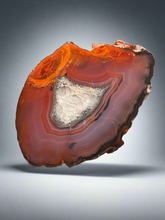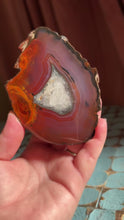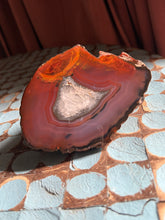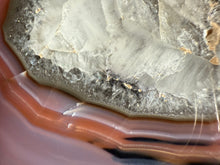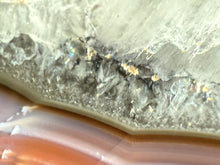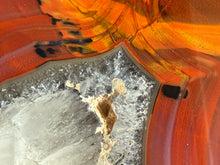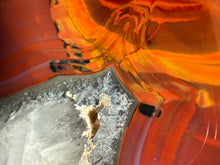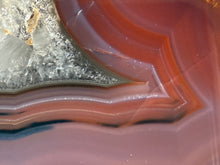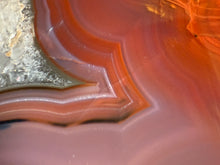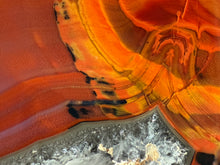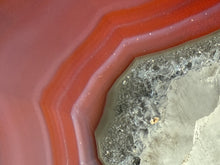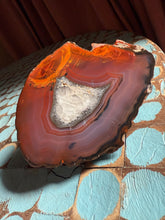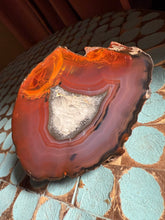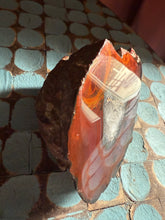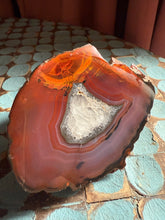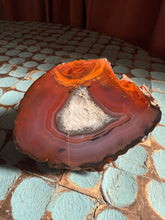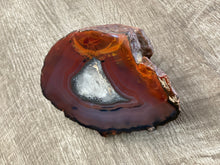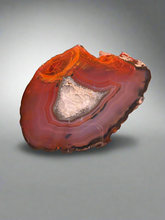
Condor Agate: A Jewel of Argentina’s Geology
Introduction
Among the most visually captivating and sought-after gemstones in the world, Condor Agate holds a special place for collectors, lapidary artists, and geologists alike. Discovered relatively recently in the late 20th century, this variety of agate hails from the rugged landscapes of Patagonia in Argentina. Its vibrant colors, fine banding, and intricate patterns make it a standout among agates globally. This essay explores the origin, geological formation, characteristics, and significance of Condor Agate.
Geological Origin
Condor Agate is found primarily in the Mendoza Province of Argentina, a region marked by volcanic activity millions of years ago. Agates are a form of chalcedony, a microcrystalline variety of quartz that forms in cavities within volcanic rocks. These cavities fill slowly with layers of silica-rich solutions, which over time crystallize and harden into the banded formations characteristic of agate.
In the case of Condor Agate, the unique mineral content and environmental conditions of the region contributed to its vivid coloration and complex banding. The presence of iron, manganese, and other trace elements within the volcanic host rock played a crucial role in the development of the agate’s rich hues.
Discovery and Name
Condor Agate was first discovered in the early 1990s by a local rockhound named Luis de los Santos. The name “Condor Agate” is a tribute to the majestic Andean condor, a bird native to the Andes and symbolically associated with freedom and the heights of the Patagonian wilderness. The agate’s striking appearance and exotic origin quickly drew the attention of the international gem and mineral community.
Physical Characteristics
What sets Condor Agate apart is its stunning coloration and tight, concentric banding. The agates typically exhibit bold combinations of reds, oranges, yellows, blacks, and purples. These colors are arranged in elaborate patterns that can include eyes, plumes, and fortification-style bands.
Each specimen is unique, with the internal designs resembling abstract paintings or cosmic landscapes. When polished, the agate takes on a brilliant luster, further enhancing its visual appeal. The high silica content also makes it ideal for cutting into cabochons, spheres, and display slabs.
Lapidary and Collector Value
Due to its aesthetic qualities, Condor Agate is a prized material in lapidary arts. Artisans use it to create jewelry, carvings, and decorative items. For mineral collectors, high-grade specimens with vibrant colors and well-defined banding are highly valuable and often command premium prices.
Unlike mass-produced agates from Brazil or Africa, Condor Agate is not found in large deposits, which adds to its rarity and desirability. Ethical collecting is important, as overharvesting and unregulated mining can deplete natural sources and harm the local environment.
Scientific and Educational Importance
Beyond its beauty, Condor Agate serves as an important example of volcanic geochemistry and mineral formation. Studying its structure can provide insights into the geological history of the Andes region, particularly the nature of silica deposition in volcanic terrains. It is also used in classrooms and museums to illustrate the processes of agate formation and the role of trace minerals in coloration.
Conclusion
Condor Agate from Argentina is more than just a gemstone—it’s a natural artwork forged in the heart of ancient volcanic flows. Its vivid colors, intricate designs, and geological significance make it a treasure of both science and art. As a product of a unique landscape and a testament to nature’s creativity, Condor Agate continues to captivate and inspire those who discover it, whether through a jeweler’s lens or a geologist’s microscope.



















